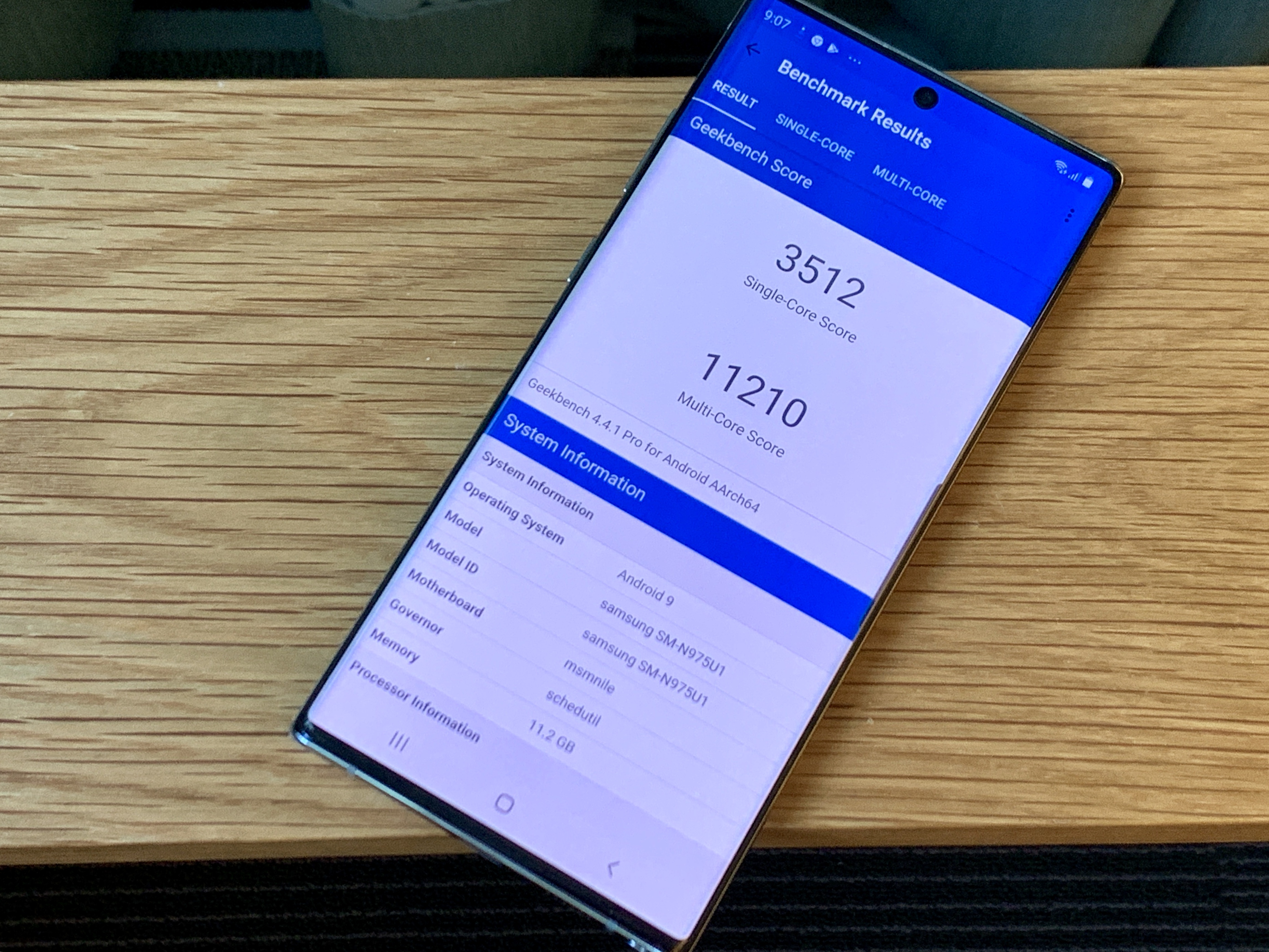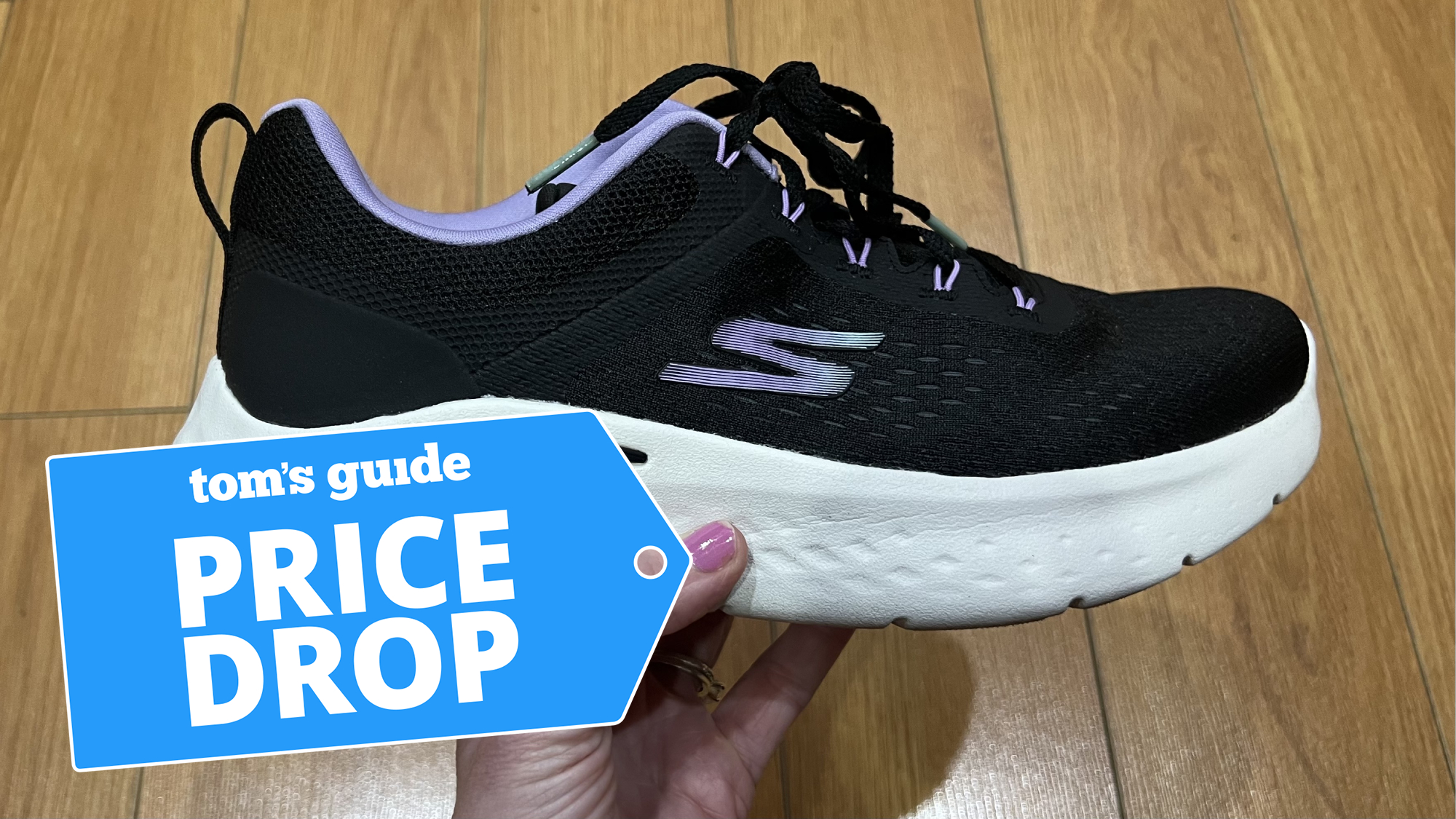Galaxy Note 10 and Note 10 Plus Benchmarks: Here’s How They Stack Up
One of the most powerful phones ever is still a step behind Apple

It doesn't look like Apple has to worry about the Galaxy Note 10, at least when it comes to performance.
Our Galaxy Note 10 Plus review is in, and this phone is indeed fast, thanks to its 12GB of RAM and faster UFS 3.0 storage alongside its Snapdragon 855 CPU, Overall, this Android phone offers pretty impressive performance, but last year's iPhone XS Max is faster in two key tests.
The good news is that the Note 10 Plus' display is practically perfect based on our lab tests. Here's all the results so far.
Updated Aug. 23, 12:56 p.m. ET: Geekbench, 3DMark and display testing results for the 6.3-inch Note 10 have been added.
Geekbench 4
| Geekbench 4 (Multicore) | Header Cell - Column 1 |
|---|---|
| Galaxy Note 10 Plus (12GB RAM) | 11,210 |
| OnePlus 7 Pro (12GB) | 11,227 |
| iPhone XS Max | 11,515 |
| Galaxy Note 10 (8GB) | 10,906 |
| Galaxy S10 Plus (8GB) | 10,732 |
The Galaxy Note 10 Plus turned in a fairly high score on Geekbench 4. Its multicore score of 11,210 is among the fastest Android phones ever, as it's neck and neck with the OnePlus 7 Pro with 12GB of RAM. OnePlus' phone hit a slightly higher 11,227 on the same test.
Samsung's Note 10 Plus surpassed the Galaxy S10 Plus on Geekbench, as the latter mustered only 10,732 with its Snapdragon 855 CPU. However, our S10 Plus review unit had just 8GB of RAM.
Meanwhile, the smaller, 6.3-inch Note 10 delivered a score just ahead of the S10 Plus', at 10,906. This model of the phablet comes with 8GB of RAM, like the S10 we tested, but below the 12GB in the larger Note 10 Plus.
Even though it's now almost a year old, the iPhone XS Max remains the champ on this test, as it turned in a score of 11,515, thanks to its powerful A12 Bionic chip. And the iPhone 11 and its expected A13 processor should be even faster.
3DMark Sling Shot Extreme
| 3DMark (OpenGL ES 3.1) | Header Cell - Column 1 |
|---|---|
| Galaxy Note 10 Plus | 5,781 |
| OnePlus 7 Pro | 5,581 |
| Galaxy S10 Plus | 5,648 |
| Galaxy Note 10 | 5,374 |
| iPhone XS Max | 4,339 |
When it comes to graphics performance, the Galaxy Note 10 Plus is a powerhouse. It reached a sky-high score of 5,781 on 3DMark Sling Shot Extreme, which is a demanding benchmark that supports OpenGL ES 3.1.
The Plus' score obliterates the iPhone XS Max (4,339) and narrowly beats the Galaxy S10 Plus (5,648). The OnePlus 7 Pro (5,581) also fell behind the Galaxy Note 10 Plus. Interestingly, the regular Note 10 came in even lower than the S10 Plus, at 5,374 points.
Adobe Rush (Video Editing transcode 4K to 1080p)
| Adobe Rush (min:sec) | Header Cell - Column 1 | Header Cell - Column 2 |
|---|---|---|
| Galaxy Note 10 Plus | 1:34 | Row 0 - Cell 2 |
| iPhone XS Max | 0:41 | Row 1 - Cell 2 |
| OnePlus 7 Pro | N/A | Row 2 - Cell 2 |
| Galaxy S10 Plus | 1:37 | Row 3 - Cell 2 |
To see how well the Galaxy Note 10 handles a real-world task like video editing, we used the Adobe Rush app, which is available for Android and iOS. For this test, we transcoded a 879MB 4K video to 1080p after applying a transition effect and color filter.
The Galaxy Note 10 completed this task in a fairly speedy 1 minute and 34 seconds, but it was no match for the iPhone XS, which took only 41 seconds. The Galaxy S10 Plus finished only a few seconds behind the Note 10 Plus at 1:37.
Unfortunately, we were not able to get the Adobe Rush app to work on the OnePlus 7 Pro.
Display Testing: Brightness, Color and Accuracy
| Display brightness (nits) | Header Cell - Column 1 |
|---|---|
| Galaxy Note 10 Plus | 686 |
| Galaxy Note 10 | 674 |
| OnePlus 7 Pro | 513 |
| iPhone XS Max | 606 |
| Galaxy S10 Plus | 625 |
To determine the quality of a display we use a Klein Instruments K10-A Colorimeter. We first used this to measure brightness in terms of nits. The Galaxy Note 10 Plus's screen turned in one of the highest scores we've seen with a rating of 686 nits. The smaller Note was right behind it, at 674 nits.
The Note 10 Plus' display was significantly brighter than the OnePlus 7 Pro (513 nits) and the iPhone XS Max (606 nits). The new Note also outshined the 6.4-inch screen on the Galaxy S10 Plus (625 nits).
| Display Color Gamut (sRGB) | Header Cell - Column 1 |
|---|---|
| Galaxy Note 10 Plus | 212.4%/124.6%* |
| Galaxy Note 10 | 125.1% (Natural) |
| OnePlus 7 Pro | 180% |
| Galaxy S10 Plus | 200.3%/136.5%* |
| iPhone XS Max | 123% |
* Vivid/Natural mode results for Galaxy phones
The Galaxy Note 10's 6.8-inch Dynamic AMOLED display is not only ginormous, it's positively gorgeous, which is backed by our lab results. The panel registered 212% of the sRGB color gamut in Vivid mode and 124.6% in Natural screen mode. The regular Note 10 performed similarly in Natural mode, at 15.1%.
By comparison, the OnePlus 7 Pro reached 180% on this test and the iPhone XS Max hit only 123%. The Galaxy S10 Plus reached 136.5% in Natural mode and 200.3% in vivid mode.
| Display Accuracy (Delta-E) | Header Cell - Column 1 |
|---|---|
| Galaxy Note 10 Plus | 0.25 |
| Galaxy Note 10 | 0.26 |
| OnePlus 7 Pro | 0.18 |
| iPhone XS Max | 0.22 |
| Galaxy S10 Plus | 0.29 |
So how accurate are the colors that the Galaxy Note 10 Plus displays? Very. The panel turned in a Delta-E score of 0.25. On this test, a score of zero is perfect, so the lower the better. The 6.3-inch Note 10 was essentially the same, at 0.26.
This mark edges out what the Galaxy S10 Plus turned in (0.29) but it's not quite as accurate as the screens on the iPhone XS Max (0.22) or the OnePlus 7 Pro (0.18).
Bottom Line
Overall, the Galaxy Note 10 duo are very powerful Android phones, and the Plus' display is particularly impressive based on our testing. However, it's disappointing that last year's iPhone is still ahead of Samsung's new flagships on tests like Geekbench and video editing. The Note 10 pair did pull ahead in graphics performance, though.
It's important to clarify that this is just our first round of testing for the Galaxy Note 10 Plus, and we will be performing additional real-world tests for things like opening apps, gaming and other applications. For instance, the Note 10 has a Boot up Booster feature that keeps the 12 most frequently used apps in RAM so they launch faster.
We'll also be running our battery life test and measuring the charge time for the included 25W charger. (The phone's optional 45W charger will have to wait.) Stay tuned for more test results.
Sign up to get the BEST of Tom's Guide direct to your inbox.
Get instant access to breaking news, the hottest reviews, great deals and helpful tips.
Mark Spoonauer is the global editor in chief of Tom's Guide and has covered technology for over 20 years. In addition to overseeing the direction of Tom's Guide, Mark specializes in covering all things mobile, having reviewed dozens of smartphones and other gadgets. He has spoken at key industry events and appears regularly on TV to discuss the latest trends, including Cheddar, Fox Business and other outlets. Mark was previously editor in chief of Laptop Mag, and his work has appeared in Wired, Popular Science and Inc. Follow him on Twitter at @mspoonauer.

